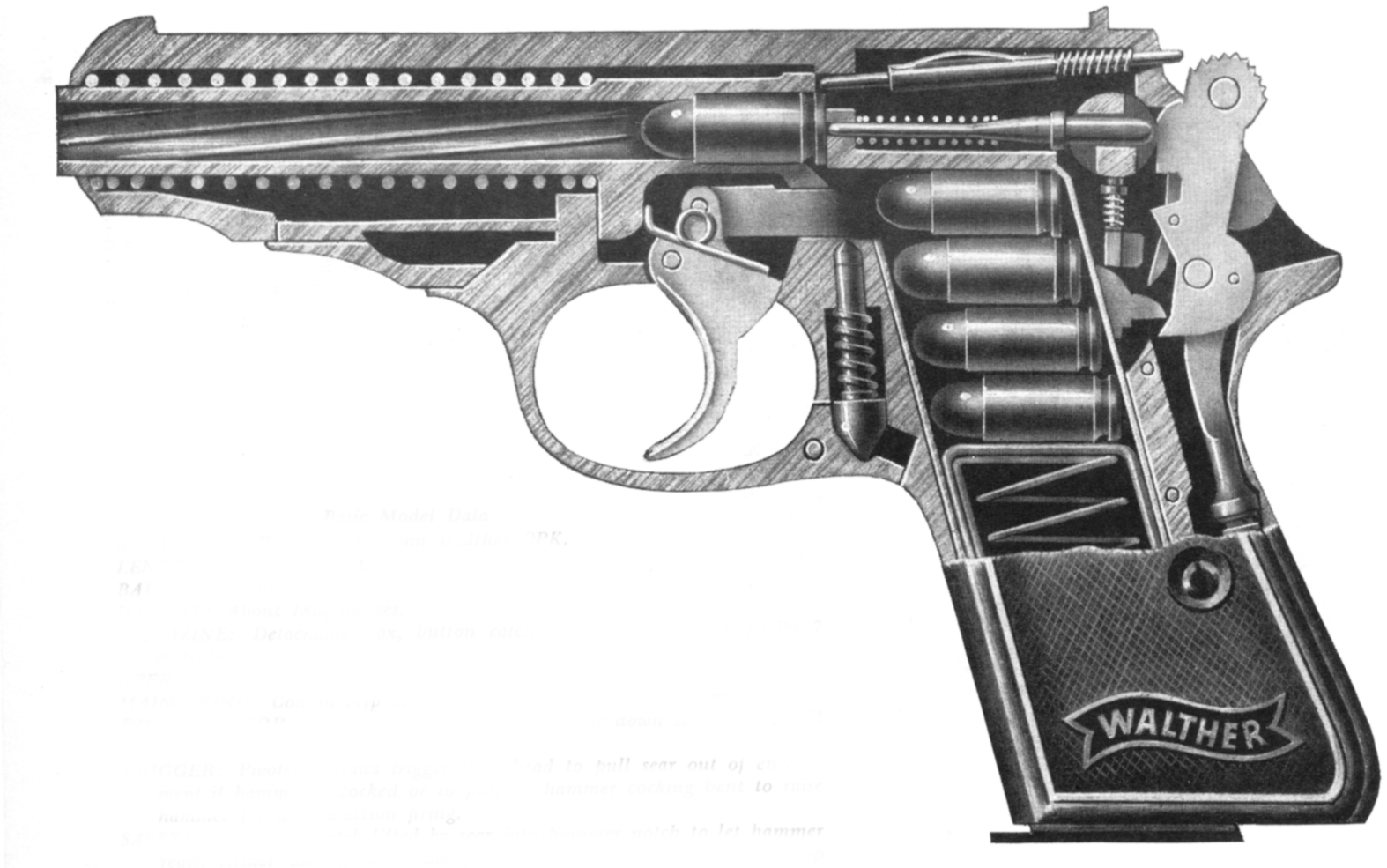I was not able to find a youtube video showing the internal mechanism of the Gretta Brahamastra. If you could post the link, I'd be very interested in watching it.
The only youtube video reviews of this pistol that I could find are the typical youtube rubbish that generally consists of:
1. See the pistol
2. Isn't it pretty?
3. Manufacturer's advertisements
Occasionally, there will be an "in depth" review that includes this "information":
4. See the pistol go bang
No such prattle is helpful for answering your question.
From what I can see, I would guess that this pistol is based on the Walther PP. (The old Soviet Makarov is also based on the Walther PP design.)
One give-away is the pivot pin you can see at the bottom end of the trigger guard. This allows the top of the trigger guard to be pulled from the frame. The upper part of the trigger guard inside the frame is the forward slide stop. When the trigger guard is pulled down, it allows the slide to move forward from its normal position. This allows the slide to correspond to reliefs in the frame and be removed from the gun.
Another clue is the safety, which is on the slide on the left hand side, near the hammer.
As the pistol is advertised as being double action, my guess would be that they have reverse engineered a Walther PP -- copied it -- while reshaping the exterior.
Blow back actions have the barrel affixed to the frame in operation by some means, as the only things that keep the firing pressure sealed in the chamber and barrel during firing is the inertia of the slide mass and the tension of the recoil spring. Low power cartridges usually use blow back actions, which are cheaper and easier to manufacture. Exceptions I know of are a model of the Spanish Llama, which has a short recoil action. This pistol is a miniature version of the 45 Auto 1911, but in 32 Auto. The other that I know of is a Kel-Tec, a plastic frame pocket gun of small size. I understand that, in this small package, the Kel-Tec's use of the short recoil, rather than blowback action lessens the recoil of shooting and makes the little gun, which is hard to hold, much more manageable. But, as I've never shot one, I cannot say this by personal experience.
Another thing I'd like to draw your attention to: Look at the name and the trademark on the gun:

"Gretta" trademark

"Beretta" trademark
Given the three circles inside the circle, the similarity of three rockets looking like three arrows, and how "Gretta" can sound like "Beretta," you can make up your own mind as to whether this "Gretta Gun Works" is trying to sound like the gun is made by the world's oldest, and one of the most respected gun makers. You can also google the company and see reports of what it consists.
For myself, I would be mildly surprised if Beretta does not undertake trademark violations against "Gretta," if they think it is worth the bother. Trying to sound like a respected manufacturing name is a very old marketing tactic, and as it relies upon a person misunderstanding or making a mistake, not a particularly straightforward one.
The Walther PP/PPK/PPKS is a lengendary name in pistols, but as a modern gun, it's not the best design in double action pistols. The Markarov, from what I've handled, is nice, but comes chambered in that strange Soviet cartridge that was intended to get the most powerful round in a small pistol using the blowback principle -- a bit more power than the 380 Auto. Makarovs are quite nice.
I would suggest that, if you handle a double action 32 Auto pistol, you check the double action trigger pull. It can be quite stiff, as that first trigger pull must also cock the hammer, as in a double action revolver. This fact has made me turn away from setting my Wife up with a double action 32 Auto. She can't pull the trigger for the first shot. When thinking about this, you may find that the double action feature isn't all that much better than the single action of the Colt Pocket Pistol/Ashani design when it comes to practical, real world use.
You would also want to make sure that the hammer doesn't rest on the firing pin, in case the manufacturer has altered the original PP/PPK/PPKS design for easier and cheaper manufacture. When carrying the pistol with a round in the chamber, your life may depend on whether the hammer will hit the firing pin if the pistol is accidentally dropped. Scams like cribbing a trademark don't give me a lot of confidence in this area, although I'm not saying that "Gretta" has not made a reliable pistol regarding the safeness of the action. Then again, I'm not saying they have made a reliable pistol, either. I just don't know.
Remember, in such a pistol, there are (or, at least, one hopes that there are) mechanical pieces inside the gun's lockwork that will keep you safe in case of an accident. For instance, I do have confidence that the parts in my Colt double actions, my 1911 45 Auto, and my CZ 70 32 Auto are up to the task of keeping me safe. I don't have confidence in the parts inside my Chinese Norinco "Star," so I carry it with the chamber empty.
When it comes to metallurgy, you are right to question this. If the parts of the gun have been properly heat treated, you can expect that leaving it on the table in the sunlight won't cause it to begin to melt (sorry for the sarcasm), and that the springs aren't going to fail at an inopportune time. Or, you can expect that after shooting several hundred rounds through it, the slide won't be loose and rattle on the frame. (Hint here: if you look at a pistol, shake it a little
with the hammer cocked. The pressure of the hammer down on the slide will hold it tight, but when cocked, may allow you to see how loose the slide fits to the frame.)
All told, I don't see any way anyone can answer your questions unless they've thoroughly tested the gun themselves, and by this, I mean something quite different from what jokes one sees posted on youtube.
Good luck, and let us know if you find anything useful about this gun.



